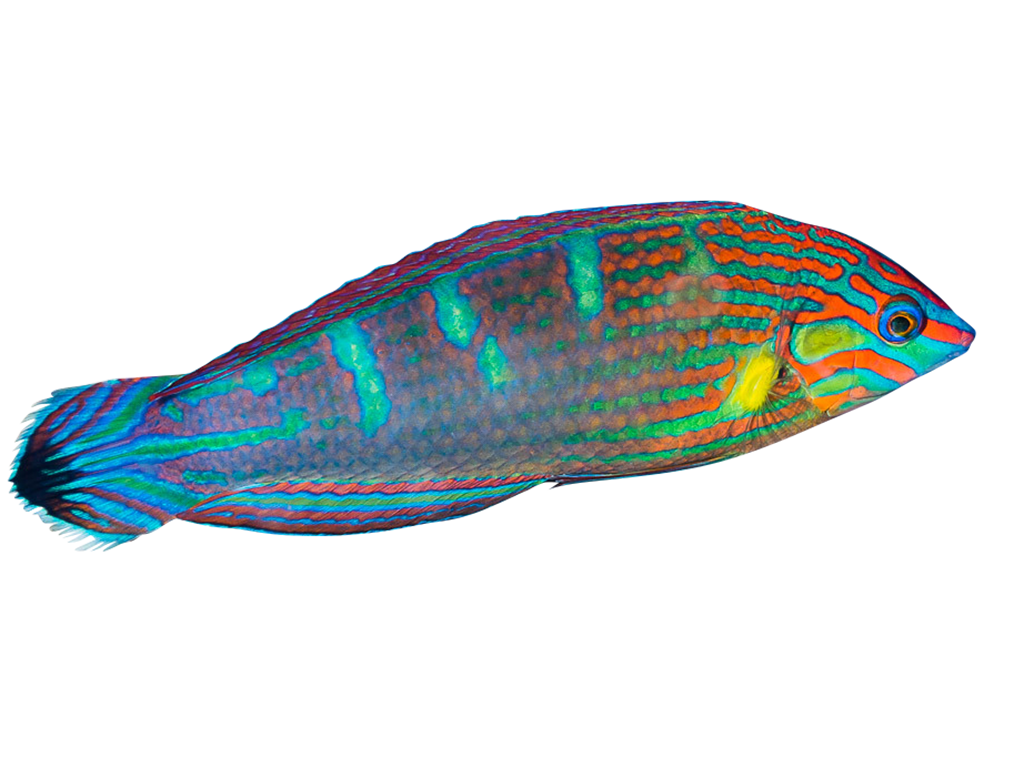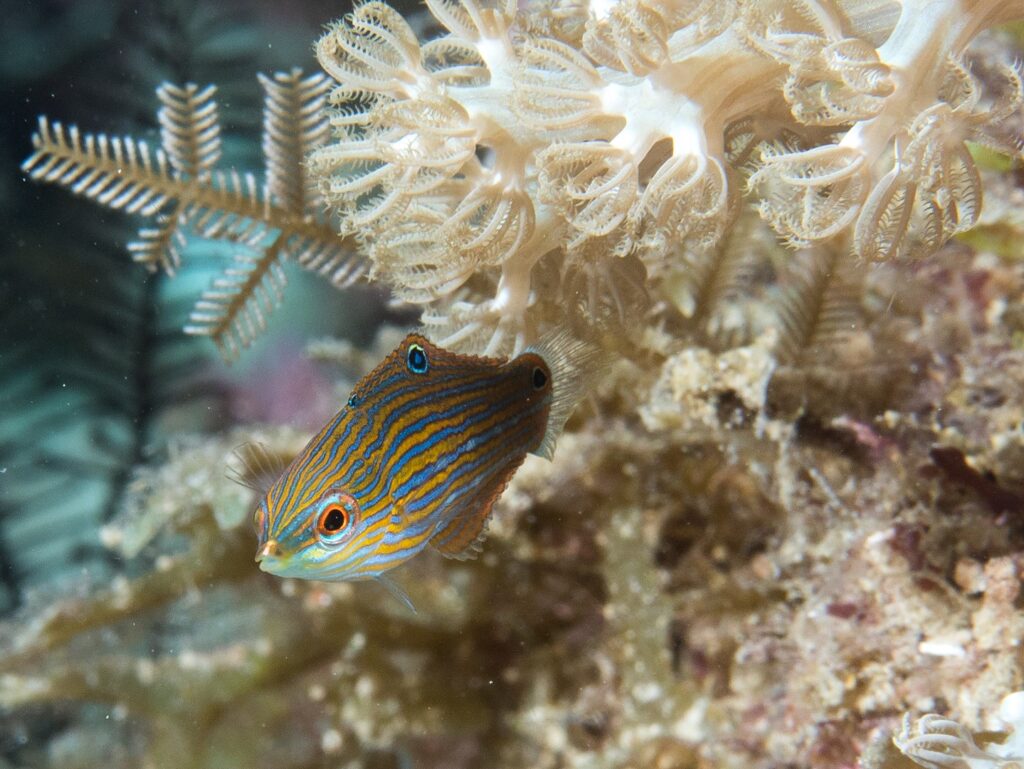Tail-Spot Wrasse
Halichoeres melanurus

Hides in the sand
The tail-spot wrasse belongs to the large wrasse family of fish, which includes more than 500 different species. Tail-spot wrasse live alone or in small schools, in coral reefs on rocky bottoms in shallow water on depths of 1–15 metres. The tail-spot wrasse often follows larger predatory fish when they hunt and catch the invertebrates that the bigger predators disturb. It is a quick swimmer and a very active fish. When it needs to escape predators, it can swim down to the bottom and hide in the sand.

Photo: zsispeo-CC-BY-NC-SA
Changes sex
The tail-spot wrasse is a so-called protogynous sequential hermaphrodite. This means that the fish changes sex during the course of its life and produces both eggs and sperm, at different stages in life. Tail-spot wrasse are born female and change into males prior to spawning. The ones that become male defend their territories and develop brighter colours. The female lays her eggs and the male fertilises them; the fry are left on their own. The species is a popular aquarium fish.

Photo: Rickard-Zerpe-CC-BY
Distribution worldwide

The Great Barrier Reef, Western Australia, Fiji, Bali, Indonesia to Japan.
Threat based on the Red List

Trade regulations
CITES: Not listed.